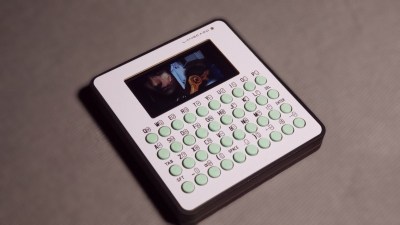If you want someone to keep your business card around, you should probably make it really cool-looking, or have it do something useful. It’s kind of the whole point of the 2024 Business Card Challenge. And while we’d normally expect electronics of some persuasion to be involved, we must admit that this magnetic fidget card definitely does something, at least when manipulated. And even when it’s just sitting there, the card has a storage slot for IDs, or whatever you want.
Have you ever played with a magnetic fidget? They are quite satisfying, and making one yourself is likely to be even cheaper than making one of the spinning variety. This one uses a whopping 16 neodymium magnets, which means that it’s probably quite aurally satisfying as well as fun to handle.
And of course, since it’s 3D-printed, you can put whatever you want on the faces and update them easily if something changes. Bonus points to [Bhuvan Bagwe] for designing some for the Hackaday crew!



















